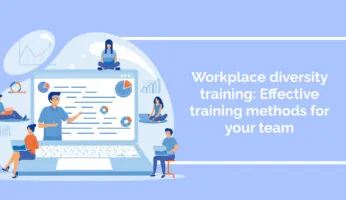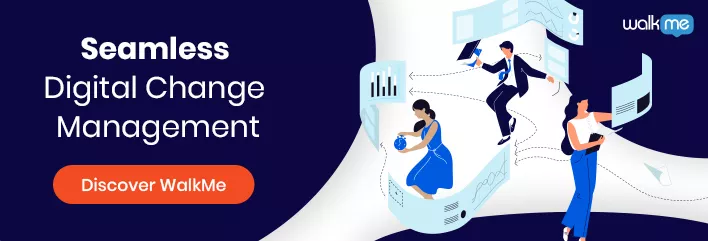
Organizational development is essential if businesses are to survive in highly competitive industries.
This is especially relevant in today’s digital age, where rapid technology changes require businesses to frequently adjust and transition
It really is a case of development or failure, but with development comes a need for change to be managed in an effective fashion.
“If you’re afraid of change, you won’t be ready for the future” @CCEAChange https://t.co/spyqutFHJz
— jasonlittle (@jasonlittle) September 28, 2018
Digital transformation is probably the biggest strategic priority in modern business. It’s the key to unlocking exponential approach, and can be capitalized to improve efficiency and productivity.
Change is considered a scary word in many business contexts. Employees of all volitions fear the unknown, especially when they’re comfortable with the current status quo.
Overhauling company culture isn’t without its unique challenges though. Failures can be triggered by anything from low morale to poor performance, alongside other specific challenges that come with transformations.
Many companies look to reorient their business with the best intentions, yet their organizational development process fails.
But why exactly would a company’s organizational development process fail? If you’re intrigued to learn how to avoid common pitfalls, read on for some great insight.
Short-Term Goals
Today’s transformations are largely digital, so are widely open to fluctuation.
This should be accounted for throughout your organizational development process. Setting rigid goals is ill-advised, especially when so much is subject to change in today’s technological age.
Short-term goals will fail to meet the evolving expectations of customers. Change rarely has a set completion date, so it’s important companies are open to the concept of continuous development.
The idea is to keep innovating until you’ve reached a desired level. Even then you should always be open to further change as and when it permits, which will probably be sooner and more often than you think.
Short-term metrics are misleading when evaluating digital adoption, so organizations must be transformed with long-term perspective.
Otherwise you may hinder an otherwise progressive approach.
Fortunately there are some excellent tools on the market to facilitate the collection of data.
Exempting Leaders
Leaders should position themselves as firm advocates of the organizational development process.
Some executives feel they’re not part of the change process, when in actuality they are arguably the most important components.
Some leaders will exempt themselves from proceedings, but what sort of example does that set for your team?
It indicates a leader who isn’t willing to practice what he preaches.
It creates a culture where staff are less inclined to support an initiative their leader doesn’t seem committed too.
Leaders should never feel exempt from the organizational development process. Smart leaders will realize the best transformations start from the top down.
Employees who observe their leaders proactively involved in change will be more likely to embrace new objectives.
The most highly influential members of staff must be the early adopters. If you expect your team to embrace change with open arms, you must visibly do the same.
Transformations take more than words, but actions too.
Delaying Transformation
Organizations commonly put change on the back burner. They do so in favor of continuing with their concrete processes, those they’ve grown accustomed to executing.
This is a beneficial approach for the short term, but not if you’re looking to achieve long term organizational growth.
Sometimes you have to forego short-term productivity if you’re to progress as a company.
Otherwise you might end up stalling your transition for months, or even years!
If you’re concerned change will wreak havoc organization-wide, you can introduce it gradually and inspire staff with some intriguing change management exercises. These will increase acceptance, modifying the perception of change considerably.
Another simple way to prevent constant delays is by implementing change initiatives sooner rather than later. You might burden your employees initially, but you should stress change will eventually make their lives easier.
A cultural transformation will enable staff to work better and smarter, and if the transformation is framed this way staff will be more accepting.
Soft Objectives
Clear cut objectives are a vital proponent of any cultural change.
Organizations commonly miscategorize cultural change as wishy-washy, but that doesn’t mean you should set vague objectives.
Your company’s culture directly influences your worker’s day-to-day behavior.
The intrinsic link between culture and business results is a great way to measure company progress. Your findings can subsequently be used to define clear goals, targets, and objectives.
For example, a customer service goal should be specific, using metrics like ‘customer service ratings’.
Lack of Data
It’s essential you understand your company’s current way of doing things before diving into transformation.
Your organizational development process will begin with a collection of useful data. This can be obtained using focus groups, surveys, one-on-one meetings, etc.
Meetings are a fantastic way of learning how staff feel about change. Employees can contribute valuable input which can be used to implement change in a suitable fashion.
Staff feedback is more useful than you’d think, especially when they know their job inside out. By actively listening and involving staff, they’ll feel a heightened sense of worth and be more receptive.
The data you collect can be used to target specific problem areas you’ve identified.
The organizational development process is an open field. Though it can’t be clearly defined, you can certainly safeguard against common mistakes for a smooth transition into the future!
WalkMe Team
WalkMe spearheaded the Digital Adoption Platform (DAP) for associations to use the maximum capacity of their advanced resources. Utilizing man-made consciousness, AI, and context-oriented direction, WalkMe adds a powerful UI layer to raise the computerized proficiency, everything being equal.



